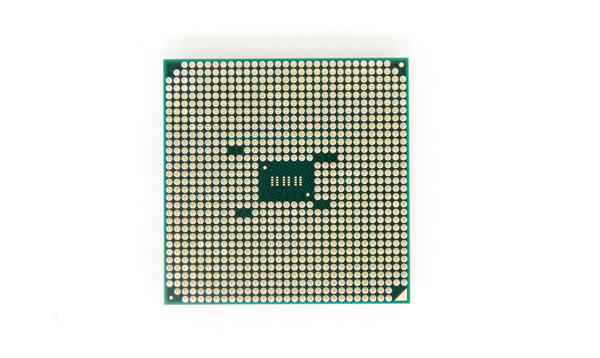AMD A10-5800K & A8-5600K Review: Trinity on the Desktop, Part 2
by Anand Lal Shimpi on October 2, 2012 1:45 AM ESTFinal Words
I have to admit, Trinity's CPU performance made it a lot closer to Intel's Core i3 3220 than I expected it to. In the worst case there's still a huge gap in single threaded performance, but even SYSMark 2012 only shows Intel's Core i3 3220 with a 12% performance advantage. Multithreaded workloads do reasonably well on Trinity as well. Intel pulls ahead in some, while AMD does in others and there's another selection of applications/workloads where we see performance parity between similarly priced Trinity and Ivy Bridge parts. A big part of all of this is Intel disabling features on its Core i3 (the lack of turbo hurts), but Piledriver's high clock speeds and AMD's pricing strategy both play a role here as well.
The big exception to all of this is high-end gaming performance. If you're planning on pairing a beefy GPU with a cheap CPU, you're much better off going with Intel than AMD at this point. Single threaded performance is still far too important to most gaming workloads for the recommendation to be anything different.
As I mentioned earlier, Trinity's CPU performance puts the buying decision squarely in the tradeoff evaluation zone. Once again what matters the most is how important Trinity's GPU is to you. AMD holds a clear advantage there if you're going to use it, otherwise the decision is heavily weighted towards Intel. Intel holds a power consumption advantage and a clear single threaded performance advantage, while there are some specific workloads that will do better on Trinity (e.g. AES-NI accelerated apps, heavily threaded integer applications).
Overall Trinity is a step forward from Llano. It's not enough to make the job of recommending the APU any less complex than what I've outlined above however. Depending on what you plan on doing with your system, Trinity is either going to be perfect or a distant second.
What I am happy to see is AMD putting a little competitive pressure on Intel here. Offering unlocked K SKUs, features like AES-NI and great GPU performance at these price points is important. I don't believe Trinity is strong enough on the CPU side to really force Intel to do the same with the Core i3, but we do need AMD to keep doing this and getting better each time.











178 Comments
View All Comments
Aone - Wednesday, October 3, 2012 - link
Who being in his right buys high-end discrete GPU for cheap CPU or APU?Plus, those who buy cheap CPUs usually don't have money for high-end discrete GPU.
Gaugamela - Wednesday, October 3, 2012 - link
Here are benchmarks that test the importance of faster RAM in these APUs. The difference in performance is astonishing. http://hexus.net/tech/reviews/cpu/46073-amd-a10-58...By overclocking and using 2133Mhz RAM the A10-5800 can get approximately a 30% increase in 3DMark and some games.
These Trinity APUs seem to be really interesting to tinker with.
creed3020 - Wednesday, October 3, 2012 - link
Thanks so much for posting that. I've been looking for this exact testing of Trinity. AT did this previously with Llano but forgot this crucial test with Trinity.It really helps system builders to set expectations for performance if a client doesn't want to pay for faster memory, or if they do want more performance we can quantify how much an improvement faster memory will have.
mikato - Wednesday, October 3, 2012 - link
Holy molyvozmem - Wednesday, October 3, 2012 - link
Keep encouraging AMD, guys.rarson - Wednesday, October 3, 2012 - link
Why in the world did you not mention which video card you were using on this page? I see that it's mentioned in the test bed, but why the heck do I have to go back and check that when you could have easily mentioned it on the discrete test page?Also, why are you using a 5870 with this? Who the hell is going to pair a new A8 or A10 Trinity with a 5870? That's completely illogical. Couldn't you have tried something newer, perhaps something within the same architecture? Extremely puzzling.
etamin - Wednesday, October 3, 2012 - link
And why was an FX-8150 thrown into the DISCRETE PROCESSOR GRAPHICS benchmark?Hardcore69 - Wednesday, October 3, 2012 - link
HA! Glad I went with an i3 3220 for this office box. Look at the power consumption at load, look at the single threaded benchmarks, even look at the multi threaded benchmarks. AMD is crap. It still hasn't caught up. And there are very few upgrade options compared to Intel. If you want to play games, a dedicated GPU is still vastly better. For other basic tasks, FAIL.rarson - Wednesday, October 3, 2012 - link
You paid more money.They're called trade-offs. That's reality.
Nil Einne - Friday, October 5, 2012 - link
Has anyone come across real world power consumption figures for either the A8-5500 vs A8-5600K or the A10-5700 vs A10-5800K. These have different TDPs, 65W vs 100W and slightly different clocks. But I'm wondering whether the K ones are really that bad in general or it's partially that they wanted more headroom since the K ones are to some extent designed to be overclocked. Of course the different ratings means that you may get unlucky and get a fairly high consumption K processor because of binning but still may be relevent. I'm somewhat out of date and not familiar with how turbo works, but I'm guessing the higher binning means it will stay at turbo for longer so a proper test should also try limiting the K to be the same as the non K just to see if that's the primary reason for any differences. (Ideally also limit the frequencies.)Most reviews including this one seem to be of the Ks I presume because that's what AMD sent out for testing.
Cheers